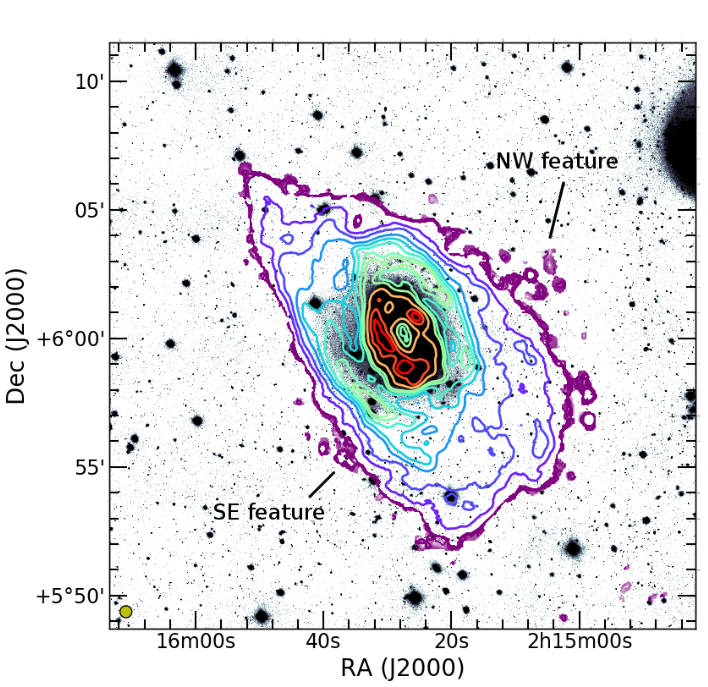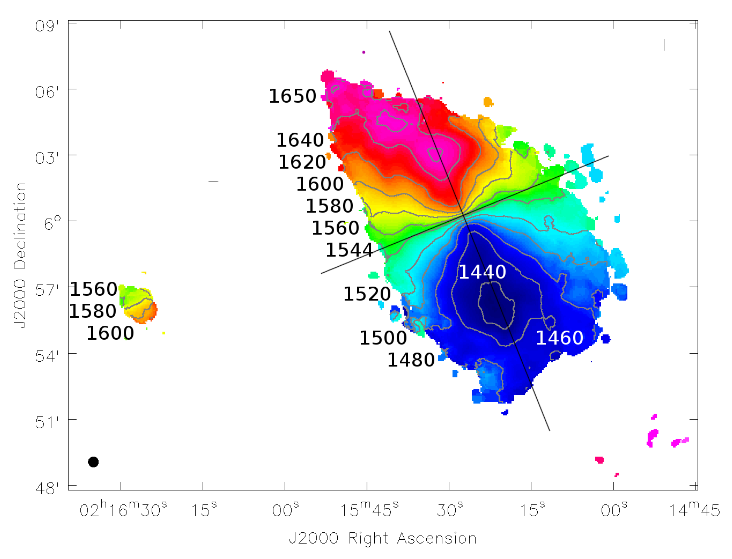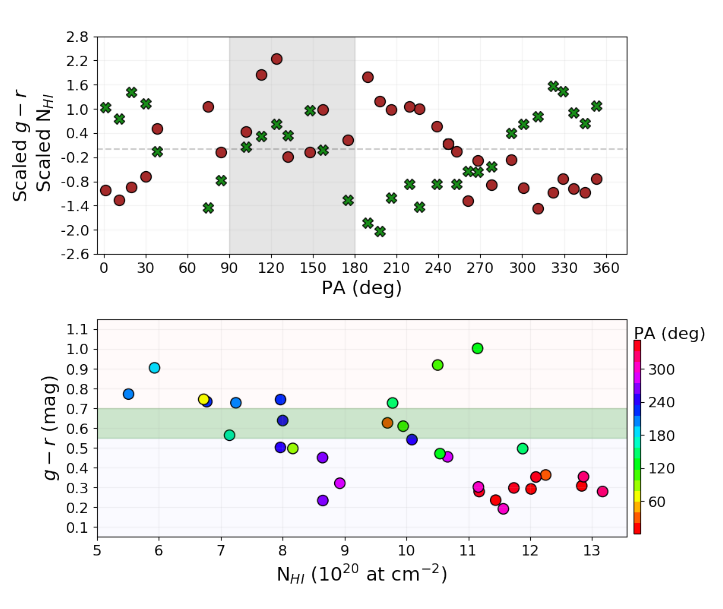Environment and faint features of CIG 96: deep optical and HI observations (2018)
Scientific Results
- Positions for CIG galaxies
- Redshift and distances
- Morphologies
- Isolation
- A catalogue of neighbours around isolated galaxies based on POSS I & II images
- Quantification of isolation based on POSS I & II images
- Revision of isolation criteria using the SDSS
- Effects of the environment on galaxies in the..
- Catalogues of isolated galaxies, isolated pairs, and isolated triplets..
- Star formation
- Optical specialization
- Radio continuum properties
- Atomic gas
- Isolated Galaxies
- Environment and faint features of CIG 96: deep optical and HI observations (2018)
- Atomic gas scaling relations (2018)
- A ∼12 kpc HI extension and other HI asymmetries in the isolated galaxy CIG 340 (2014)
- HI asymmetry in the isolated galaxy CIG 85 (2012)
- HI asymmetries in the isolated galaxy CIG 292 (2011)
- Asymmetries in isolated galaxies (2011)
- The large asymmetric HI envelope of CIG 96 (2005)
- Compact groups
- Studies of complementary samples
- Isolated Galaxies
- Molecular gas
- Nuclear activity
Environment and faint features of CIG 96: deep optical and HI observations
Asymmetries in HI in galaxies are often caused by the interaction with close companions, making isolated galaxies an ideal framework to study secular evolution. The AMIGA project has demonstrated that isolated galaxies show the lowest level of asymmetry in their HI integrated profiles compared to even field galaxies, yet some present significant asymmetries. CIG 96 is a representative case reaching a 16% level. We have investigated the HI asymmetries of the spiral galaxy CIG 96 and what processes have triggered the star-forming regions observed in the XUV pseudo-ring.
We performed deep optical observations at CAHA1.23m, CAHA2.2m and VST (OmegaCAM wide-field camera) telescopes. We reach surface brightness (SB) limits of μCAHA2.2m = 27.5 mag arcsec−2 (Cousins R) and μVST = 28.7 mag arcsec−2 (SDSS r) that show the XUV pseudo-ring of the galaxy in detail.
This 12′ × 12′ combined image of the Cousins R image from CAHA2.2m telescope and the three photographic B, G, R images from CAHA1.23m telescope illustrates the outer faint structures of the galaxy (e.g. the pseudo-ring, the northern region in a magenta ellipse or the eastern diffuse emission pointed out by the yellow arrow. The inner coloured area corresponds to an SDSS image of CIG 96 down to ∼24 mag arcsec−2 (SDSS r band) and is used as reference.
Additionally, a wavelet filtering of the HI data cube from our deep observations with VLA/EVLA telescope allowed us to reach a column density of NHI = 8.9 × 1018 cm−2 (5σ) (28′′ × 28′′ beam), lower than in any isolated galaxy. We confirm that the HI of CIG 96 extends farther than 4 × r25 in all directions. Furthermore, we detect for the first time two gaseous structures (∼106 Msol) in the outskirts.
Background: VST optical image of CIG 96 ranging from 26 to 28 mag arcsec−2. Foreground: HI cube integrated profile contours showing column densities of 0.6, 7.1, 14.1, 28.2, 42.3, 56.5, 70.6, 80.4, 105.8, 127.0 and 141.1 × 1020 cm−2. The yellow circle at the bottom left repre- sents the beam size of 28′′ × 28′′.
HI velocity field map of CIG 96 and its companion after a 3.5σ blanking. The black lines indicate the orientation of the major and minor axis (PAmaj = 20º and PAmin = 110º, respectively) along which the position–velocity cuts have been performed (see Fig. 8). Grey contours represent the indicated velocities in km s−1 . The black circle at the bottom left represents the beam size of 28′′ × 28′′.
The SDSS g − r colour index image from CAHA1.23m shows extremely blue colours in certain regions of the pseudo-ring where NHI > 8.5 × 1020 cm−2 , whereas the rest show red colours. Galactic cirrus contaminate the field, setting an unavoidable detection limit at 28.5 mag arcsec−2 (SDSS r).
Top panel: g − r (brown circles) and NHI (green crosses) scaled (mean subtracted, sigma divided) values in each of the 33 apertures. A grey dashed line has been drawn at g − r = 0 for reference. Redder colours and higher NHI are positive in this figure. Bottom panel: g − r median colour index vs. NHI measured in the 33 apertures traced over the pseudo-ring. The green horizontal stripe represents the Green Valley in SDSS g − r.
At the current SB and NHI levels, we detect no stellar link within 1º × 1º or gaseous link within 40′ × 40′ between CIG 96 and any companion. The isolation criteria rule out interactions with other similar-sized galaxies for at least ∼2.7 Gyr. Using existing stellar evolution models, the age of the pseudo-ring is estimated at 1 Gyr or older. Undetected previously accreted companions and cold gas accretion remain as the main hypothesis to explain the optical pseudo-ring and HI features of CIG 96.




